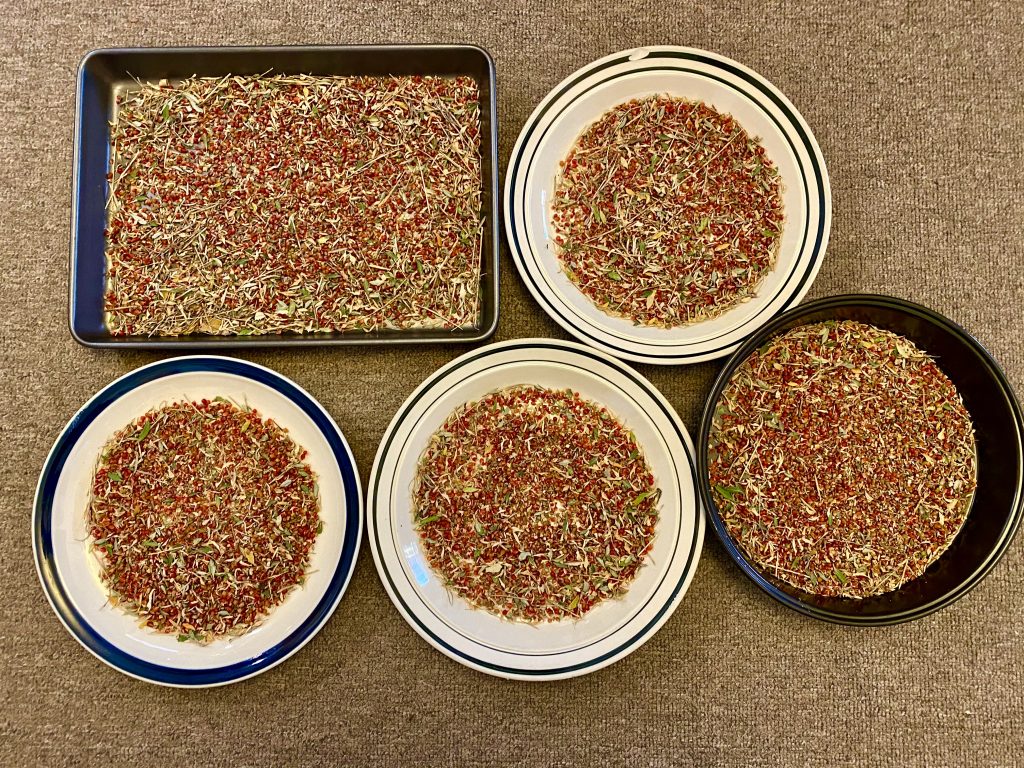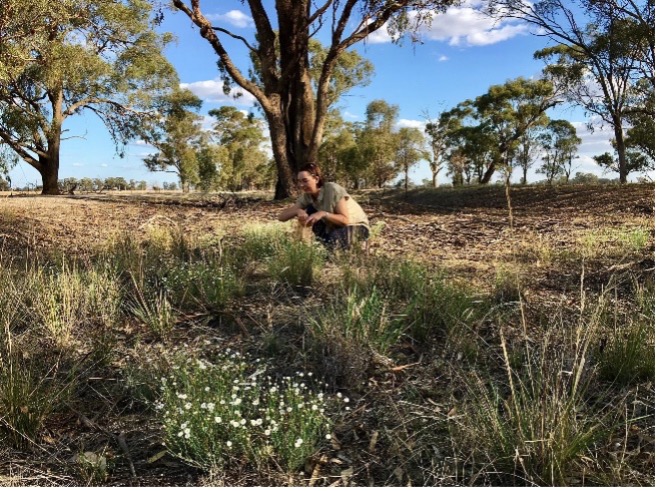The Kilter Rural Australian Farmlands Funds (KAFF) is dedicated to regenerating the landscapes that we are operating on. This goes beyond the paddock, Kilter takes a landscape approach to the regeneration of farmland, up to 30% of landscapes managed under the Funds will be revegetated with endemic (locally native) species of Australian Flora. Working with groups such as the Goulbourn Broken Indigenous Seedbank to collect seeds from the KAFF landscapes ensures we, and others, will be able to continue to revegetate the landscapes of the Goulburn Broken region.
Recently the Goulburn Broken Indigenous Seedbank (GBIS) collected seed from several important shrub species on Kilter managed lands of the Australian Farmlands Fund near Girgarre in northern Victoria. This seed from Atriplex semibaccata (Berry Saltbush) and Maireana decalvans (Common Bluebush), helps builds the genetic diversity of these species’ seed pool held at the seedbank. These species offer important groundcover across central and northern Victoria, however, are not commonly used in revegetation projects owing to the difficulty collecting the quantities required.
In late April a team of three from the Working for Victoria CoVID employment response initiative, supervised by GBIS, collected 171 grams of seed from three separate populations of these species on the fund’s properties. Seed collection is fulfilling though tedious though work, picking small berries from the Atriplex and light papery seed from the Maireana on hands and knees. This seed adds to the eight populations of Atriplex and four populations of Maireana seed collected elsewhere across this region.
The seed collected will be used to build genetic diversity within the Goulburn Broken catchment’s Seed Production Areas (SPA). SPAs are planted sites designed to provide large quantities of genetically diverse seeds that are difficult or unreliable to collect in the wild. Seed collected from SPAs goes into landscape restoration across the Goulburn Broken catchment via direct seeding or planting projects, including of course on Kilter managed lands.

Within the Australian Farmlands Funds, we aim to revegetate up to 30% of our landscape for biodiversity, carbon sequestration and regenerative outcomes. In many cases, there is less than 5% of remnant native vegetation remaining due to the highly altered nature of farmland. This winter Kilter will again directly seed endemic vegetation into the landscape to bring the current total area dedicated to revegetation to 20% of land managed.
To hear more about the KAFF and the work we do please contact us at invest@kilterurral.com
